Bougainvillea, native to the tropical forests of Latin America, is an evergreen, flowering shrub plant from the Niktaginovy family. A spectacular plant, which is characterized by a long and bright flowering, has only just begun to gain popularity in indoor floriculture. It turned out that caring for bougainvillea at home was completely straightforward.
Material Content:
Popular types of bougainvillea
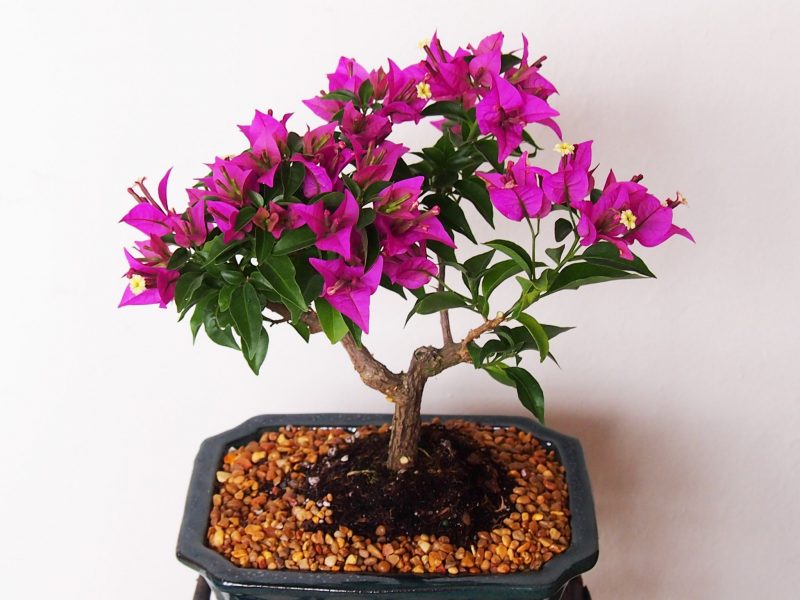
In the natural environment, there are about 14 species of the genus Bougainvillea, among which only a few are most often used for cultivation in apartments:
- Beautiful Bougainvillea is a creeper plant that is ubiquitous in the highlands of Brazil. Hairy shoots are covered with pointed leafy plates on short petioles. Elongated flowers, which are solitary or collected in inflorescences of 3-5 pieces, are framed by lilac bracts. Liana, which reaches 9 m in nature in nature, is grown at home as an ampel plant.
- Bougainvillea naked or smooth is another variety of climbing or climbing vine with a bare branchy stem that grows in dry areas of Brazil. In culture, a plant is often grown as an erect shrub. With abundant flowering, lasting for a long time, spectacular flowers bloom with lemon, apricot, pink and salmon bracts.
- Peruvian bougainvillea is a species distinguished by green bark and short spikes.A plant not prone to branching can bloom several times per season. To ensure the splendor of the representative, the view must be trimmed.
Basic requirements for growing
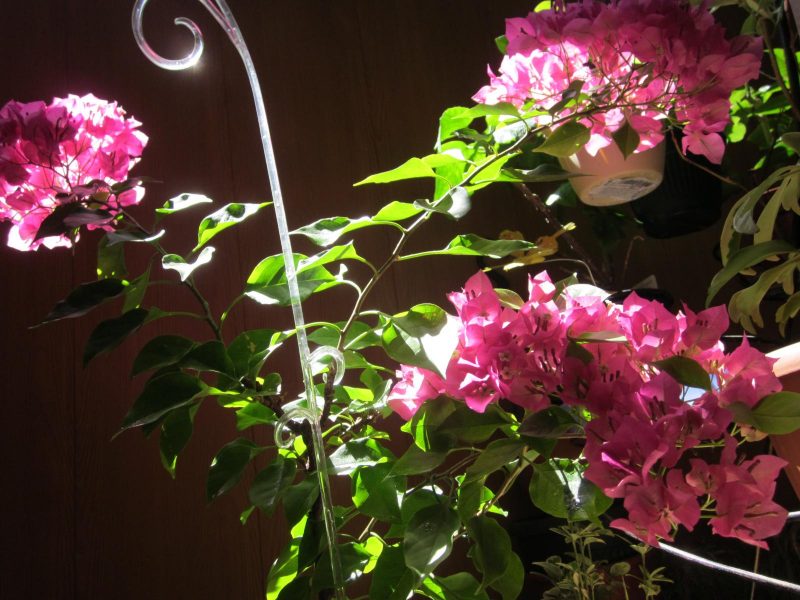
Successful cultivation of bougainvillea, which will result in the long flowering of ornamental shrubs, provides for the fulfillment of the basic requirements:
- providing bright lighting and exposure to direct sunlight;
- competent selection of the pot;
- organization of the necessary conditions for the onset of the resting phase;
- regular feeding at appropriate times;
- timely transplantation and inspection of plants for the presence of harmful organisms.
Home Care
In order to ensure a full-fledged development of a flower in an apartment environment, it is necessary to comply with certain requirements for the conditions of detention.
Lighting and location for bougainvillea
The representative of the tropical flora is a photophilous plant, which during the period of active vegetation needs a lot of light, without requiring shading from direct sunlight. If possible, it is worthwhile to place the culture near the southern windows to provide the flower with the necessary amount of open sun - 3-4 hours a day. With the advent of winter, bougainvillea moves to a place with less light.
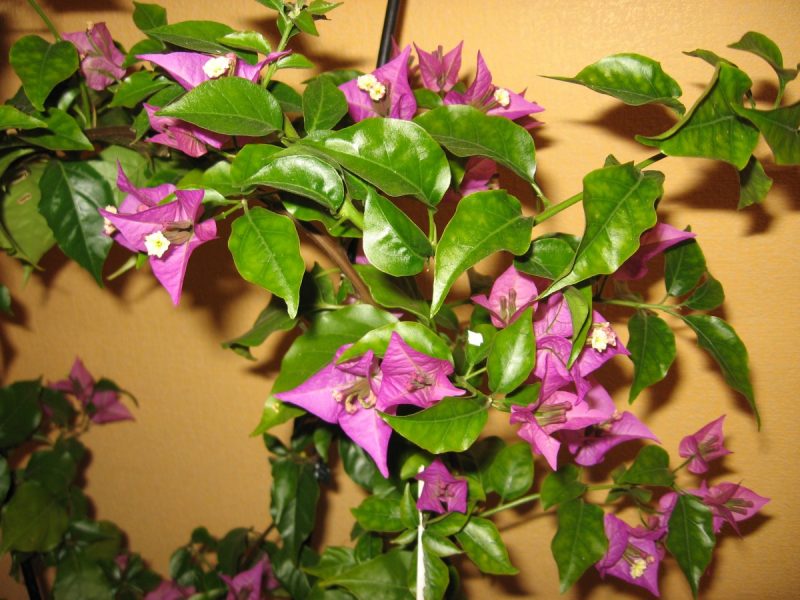
Advice! In the summer, it is recommended to move the flower to fresh air, where protection against drafts is organized.
Ground and pot requirements
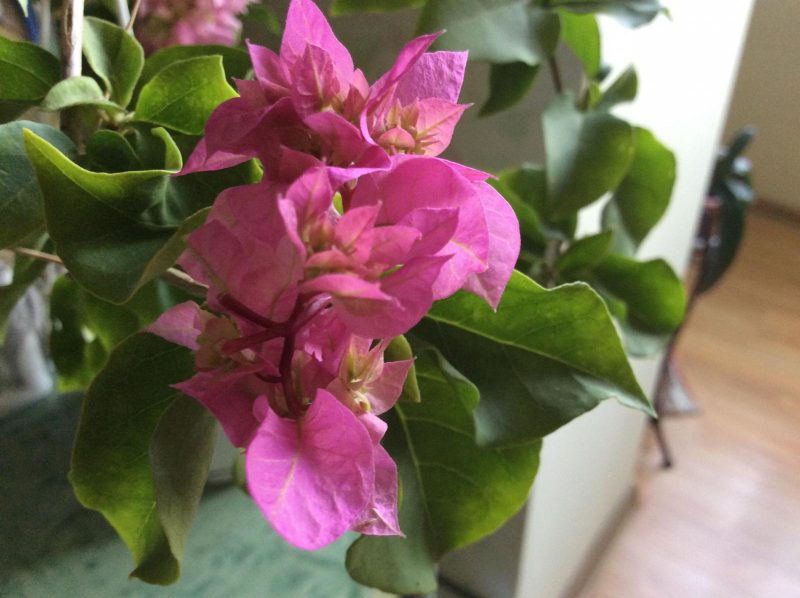
Bougainvillea, which grows in the natural environment on stony soils, prefers dense soils with good aeration and slightly alkaline reaction, while remaining not demanding on the soil composition. With independent preparation of the substrate, it is recommended to mix sheet and sod soils, sand and peat in a ratio of 3: 3: 1: 2. In order not to hamper the development of a powerful root system, it is necessary to choose high capacities for planting.
Temperature
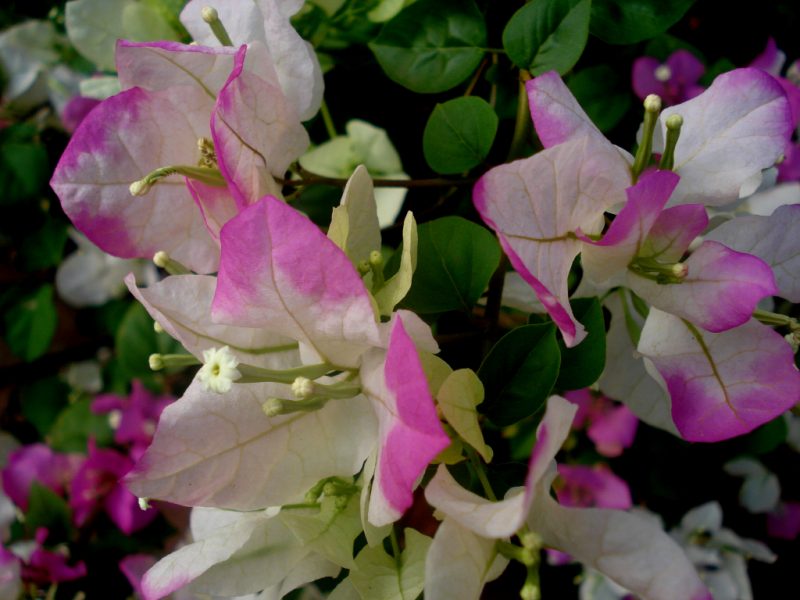
The temperature regime of the culture depends on the phase of development of the shrub plant:
- Throughout the growing season, optimum temperature values range from 22 to 30 ° C.
- With the advent of cold weather, the temperature in the room where the culture is kept drops to 15 ° C, which allows the plant to plunge into a dormant state.
Caution! Lowering the temperature below 7 ° C can lead to the development of pathogenic organisms and further death of the exotic flower.
Watering
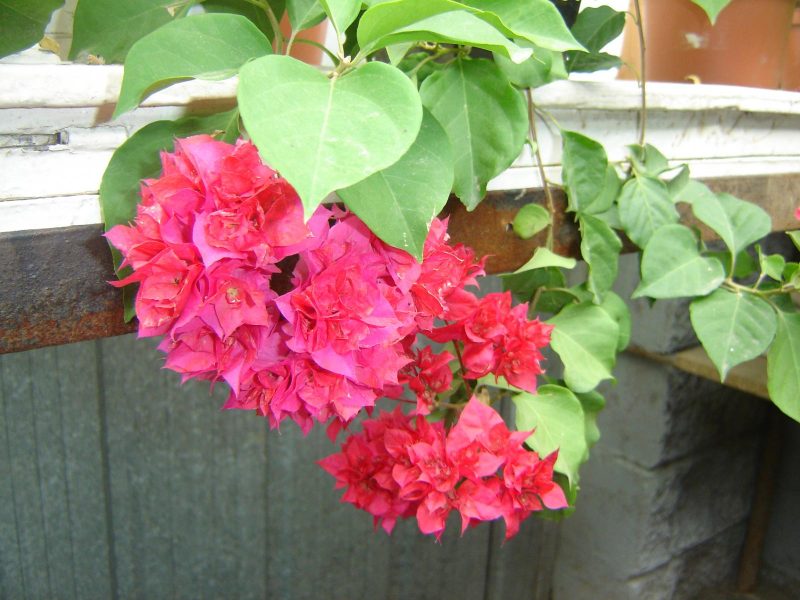
Since the natural habitat is the region where the rainfall is minimal, bougainvillea requires moderate hydration. A signal about the need for regular watering is the dried surface of an earthen coma. In winter, when the dormant phase sets in, hydration is reduced. In order to prevent overflows, which lead to rotting of the root system, the remnants of not absorbed moisture from the pallet merge. For irrigation, settled water of room temperature, not containing chlorine, is used. Humidity, which in hot weather plays an important role for the tropical representative, is increased by systematic spraying.
Attention! Overdrying the substrate also has a detrimental effect on the culture, so it is necessary to carry out balanced watering.
Fertilizing and fertilizers
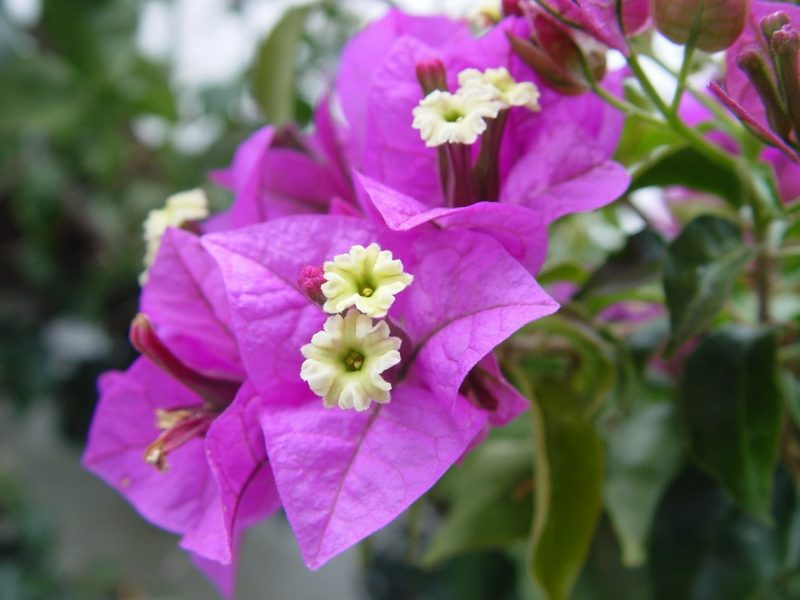
To ensure lush and bright flowering, as well as the full development of green mass, the culture during the period of active growth needs additional fertilizing, which is carried out three times a month with liquid complex fertilizers for flowering plants.
Important! With the onset of the rest period, additional nutrition is not carried out.
Pruning
Performing a bougainvillea haircut, cultivated at home, is one of the most important components of comprehensive care.
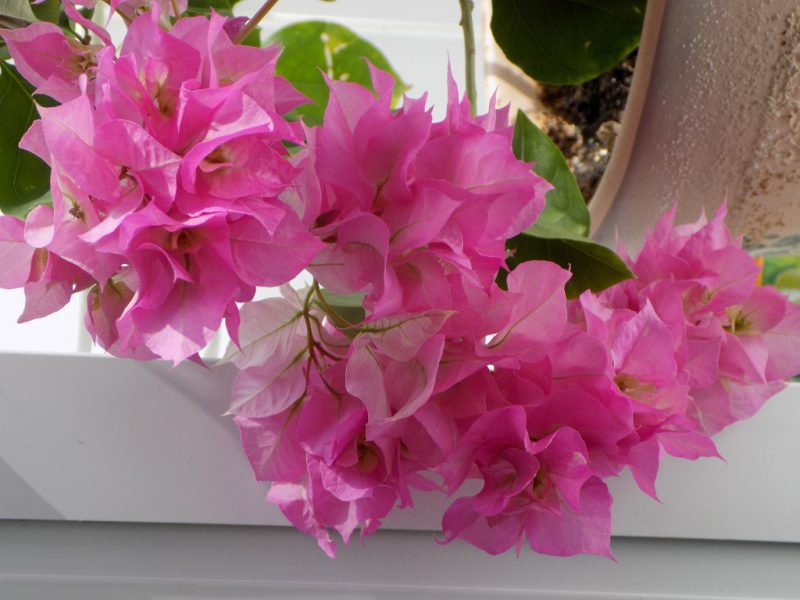
Depending on the season, different types of haircuts are carried out:
- To stimulate branching, which maintains decorativeness, as well as flowering, shoots are shortened by a quarter each year in February. On new additional shoots, flowers later appear.
- In the spring, a sanitary haircut is carried out, in which weak, injured shoots are removed.
- In summer, shoots with faded inflorescences are shortened, which allows to stimulate another budding.
Attention! Shoots that have reached the age of 3 years are not subject to pruning due to the small number of buds awakening on them and the inability to form side shoots.
Plant transplant
Young specimens are transplanted every two to three years, adults - every 5-6 years.
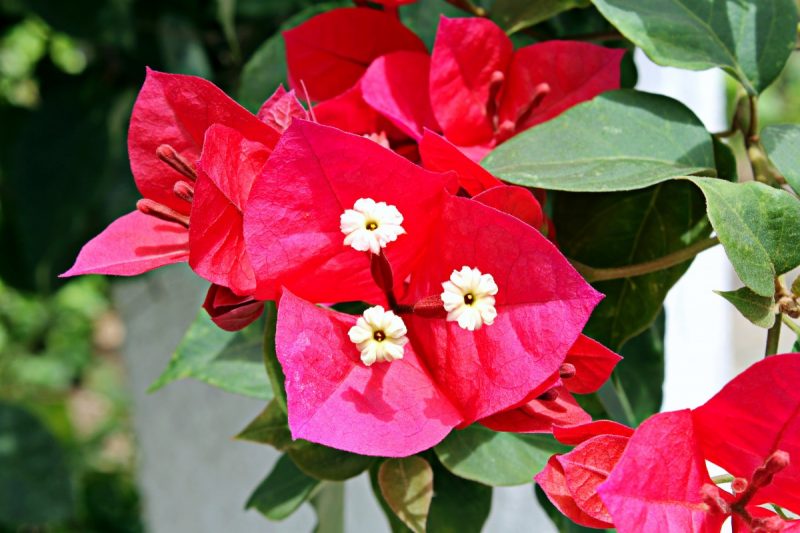
Then the need for its implementation depends on:
- level of depletion of the fertile layer of the substrate;
- the size of the root system of the plant.
The procedure is as follows:
- A new pot is selected, the diameter of which is 2 cm larger than the previous capacity.
- A drainage layer is placed at the bottom.
- The old specimen is transplanted into the prepared pot.
- The voids are filled with a new substrate, which is moistened after compaction.
Protecting Bougainvillea from Diseases and Pests

At home, bougainvillea is often attacked by a tick, aphid, scabies and mealybug, which should be combated with insecticidal drugs according to the recommendations provided by the manufacturers of the product. With the manifestation of the development of fungal diseases, among which rot is most often noted, the rhizome is subject to treatment: the affected areas are removed, the plant is transplanted into a new substrate. Pot - is disinfected.
Propagation of bougainvillea
Despite the fact that bougainvillea also propagates by seed, the simplest and most productive method is the vegetative method - cuttings.
The cuttings are carried out with the arrival of spring heat when:
- Cuttings with one bud are prepared, in which the lower pair of leaves is removed.
- Planting material is planted in a moistened mixture of sand and peat in equal proportions.
- The container with planting moves to a well-lit place with a constant temperature of at least 25 ° C.
- After rooting, young plants are planted in individual, pre-treated pots with a special substrate.
Possible growing problems
When cultivating bougainvillea as a pot culture, the main problem is the lack of flowers. The main reason that the culture does not bloom is the non-observance of the content regulations. If you provide the plant with the necessary dormant phase with a reduction in irrigation and stop feeding, the grower will achieve lush flowering.
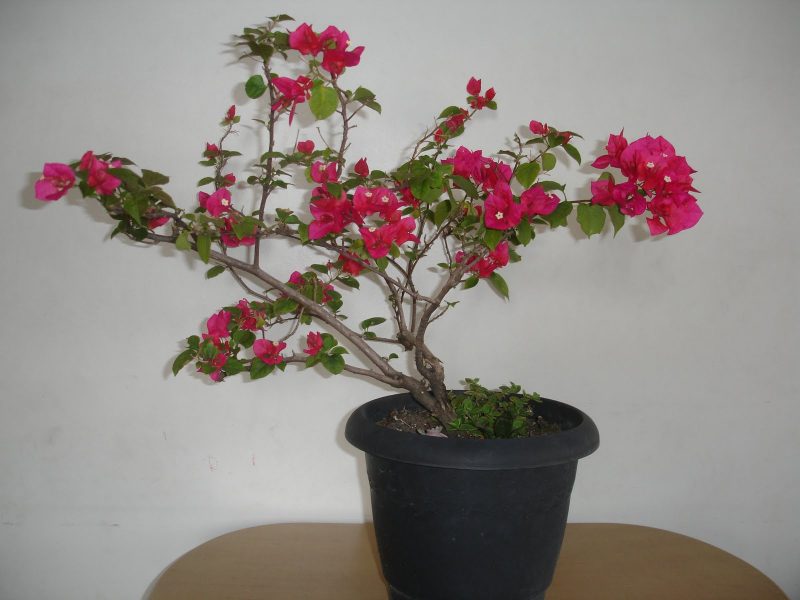
So, bougainvillea is a flower with high decorative qualities, which is very easy to ensure proper care, and the result will amaze not only the grower, but also all households. In open ground, it is found in Sochi, Batumi, Sukhumi, effectively encircling the verandas of houses.












